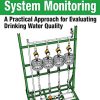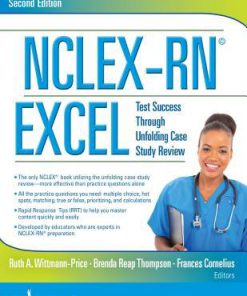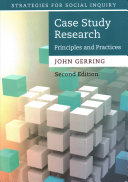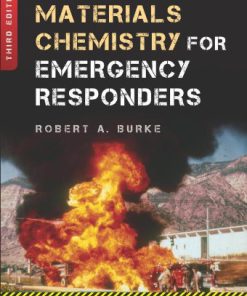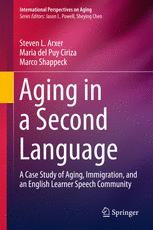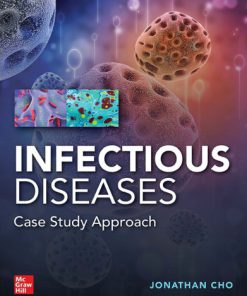Hazardous Materials Compliance for Public Research Organizations A Case Study 2nd Edition by Nicolas Valcik ISBN 1482209381 9781482209389
$50.00 Original price was: $50.00.$25.00Current price is: $25.00.
Hazardous Materials Compliance for Public Research Organizations A Case Study 2nd Edition by Nicolas A. Valcik – Ebook PDF Instant Download/Delivery: 1482209381, 978-1482209389
Full download Hazardous Materials Compliance for Public Research Organizations A Case Study 2nd Edition after payment
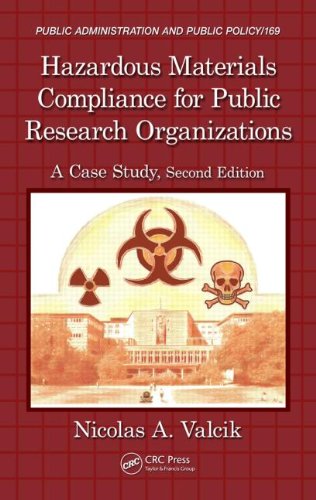
Product details:
ISBN 10: 1482209381
ISBN 13: 978-1482209389
Author: Nicolas Valcik
Completely revised and updated, Hazardous Materials Compliance for Public Research Organizations: A Case Study, Second Edition presents a case study of one university’s policies and practices with regard to the procurement, use, storage and disposal of HAZMAT in the context of a changing internal structure and regulatory environment. The author’s presentation is no-holds-barred, using interviews, archival documentation, and unobtrusive observations as a participant where the research institution was at times noncompliant with the new federal guidelines.
See What’s New in the Second Edition:
- Incorporates issues with all types of hazardous materials instead of just focusing on biological HAZMAT
- Updated information on current regulations on HAZMAT in relation to universities and research centers
- Follow-up on the case study university, disclosing the university’s progress in resolving the security and safety shortcomings
By implementing key improvements in safety and security, the universities can also more easily obtain research grant money and satisfy both state and federal safety requirements. This book includes recommendations to improve safety while using and storing biotoxins, chemical, radioactive material, and industrial waste, and to improve overall security at the university. It also highlights improvements that can make the environment a safer and more secure location to perform biological research.
Hazardous Materials Compliance for Public Research Organizations A Case Study 2nd Table of contents:
Chapter 1: Regulatory Change and Organizational Responses: A Case Study of the Procurement, Use, Storage, and Disposal of Hazardous Materials (HAZMAT) in a University Environment
- Introduction: Overview of how hazardous materials (HAZMAT) are managed in university settings, including challenges and regulatory requirements.
Chapter 2: Rise of Federal Agencies’ Influence over Research Institutions
- Background of Federal Government Involvement with Research Universities: Tracing the involvement of federal agencies in university research activities.
- History of Federal Agencies: Evolution and role of federal agencies overseeing research.
- Major Federal Guidelines Applicable to Research Centers and Universities: Key federal guidelines and regulations.
- Risk Assessment: HAZMAT at Research Centers and Higher Education Institutions: Identifying risks related to hazardous materials in research institutions.
Chapter 3: Organizational Framework: Organizational Drift, Life Cycle, and Agency Theory
- Organizational Theory with Regard to Research Activities: Understanding organizational theory in the context of research institutions.
- Researching for Life Cycle Characteristics: Exploring the life cycle characteristics of research organizations.
Chapter 4: Threat Matrix to Public Research Organizations
- Safety and Security Issues for Research Organizations: Overview of security and safety concerns in research institutions.
- Higher Education Threat Categories: Classification of threats, from categories I to VI.
- On Which Categories to Focus and Why: Recommendations for addressing specific threat categories.
Chapter 5: Methodology
- Introduction to Research Design: An overview of the research methodology employed.
- Data Collection: Various data collection techniques used in the study, including interviews, unobtrusive observations, archival documentation, and participant observation.
- Ethical Considerations in Research: Ethical concerns in conducting research.
- Research Method: Interviews: Benefits and limitations of using interviews as a research method.
- Research Method: Unobtrusive Observations: Explanation of unobtrusive observation and its data collection role.
- Research Method: Archival Documentation: The use of archival documentation for research and its limitations.
- Research Method: Participant Observation: Advantages and disadvantages of participant observation in data collection.
Chapter 6: How HAZMAT Conditions in the Science Buildings Evolved
- Historical Context: Evolution of hazardous materials management in science buildings.
- Transition to University Structure: Development from a research think tank to a full university offering both undergraduate and graduate programs.
- University’s Response to HAZMAT Issues: How decisions regarding HAZMAT were made, and the university’s evolving approach to safety and compliance with regulations.
Chapter 7: Security Survey on Campus
- Security Survey: Overview of the security measures on campus related to HAZMAT.
- Design Aspects of the Campus: Analysis of campus structures like skywalks, utility tunnels, and research buildings with HAZMAT risks.
- Summary of Security Measures: Evaluation of existing and missing security measures.
Chapter 8: Existing Policies and Procedures
- Gathering Data: Methodology used to collect existing policies and procedures regarding HAZMAT.
- Evolution of HAZMAT Policies (2002–2005): How HAZMAT policies have changed over time at the university.
- Existing HAZMAT Security Policies: Overview of current HAZMAT policies in place at the institution.
Chapter 9: Practices and Procedures at Other Institutions
- Global Issues with HAZMAT: Examining challenges faced by research centers and higher education institutions worldwide with HAZMAT management.
- Federal Issues and Impacts: The role of federal agencies in influencing HAZMAT policies.
- Best Practices at Benchmark Universities: Highlighting successful HAZMAT practices and guidelines followed by top-tier research universities.
- Summary of HAZMAT Guidelines: A comparison of best practices and policies at benchmarked institutions.
Chapter 10: Summary, Recommendations, and Concluding Remarks
- Organizational Theory in the Context of Research: Summarizing how organizational theory applies to HAZMAT management in research environments.
- Research Methods Summary: A recap of the methods used to conduct the research.
- Summary of Research Issues and Findings: Key findings from the study.
- Concluding Observations: Final reflections on the study’s implications.
- Recommendations: Suggestions for improving security measures, policy enforcement, and HAZMAT management at universities.
People also search for Hazardous Materials Compliance for Public Research Organizations A Case Study 2nd:
the hazardous materials compliance basic includes
dangerous goods compliance australia
hazardous materials safety and compliance fee
what are the hazardous materials regulations
federal hazardous materials regulations
Tags:
Nicolas Valcik,Hazardous,Materials,Compliance,Public Research,Organizations,Case Study 2nd
You may also like…
Education Studies & Teaching - School Education & Teaching
Politics & Philosophy - Social Sciences
Case Study Research Principles and Practices 2nd Edition John 1316856666 9781316856666
Engineering
Politics & Philosophy
Uncategorized
Nfpa 1072 Standard For Hazardous Materials weapons Of Mass Destruction 2017 2017th Edition Nfpa


